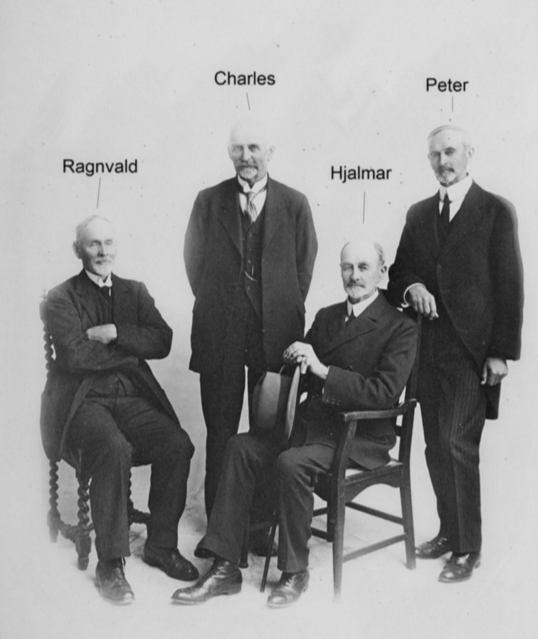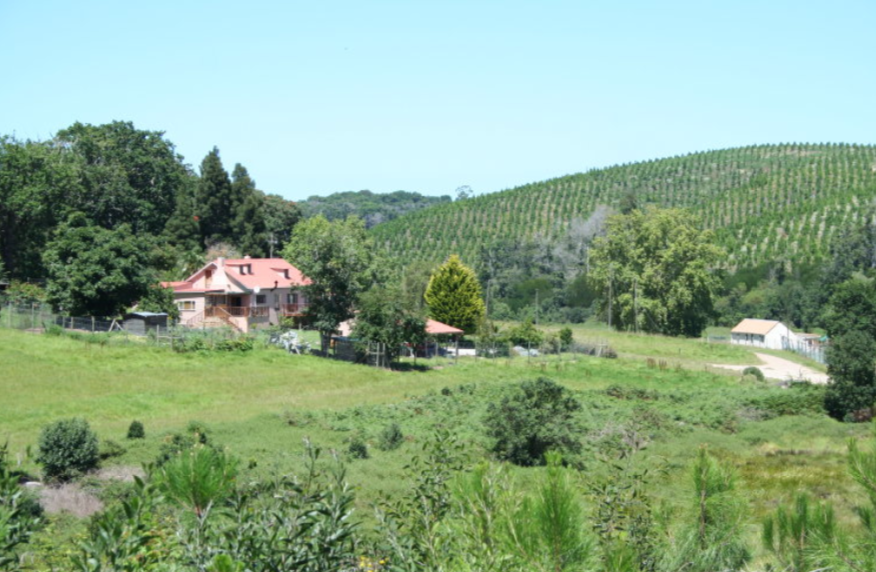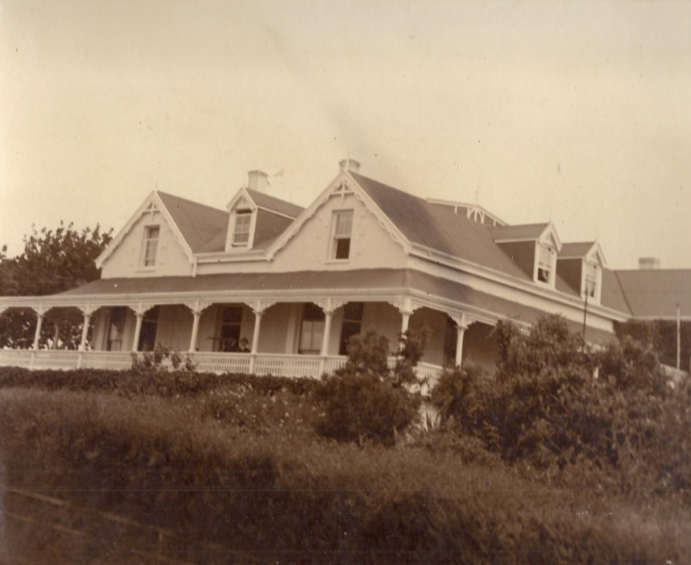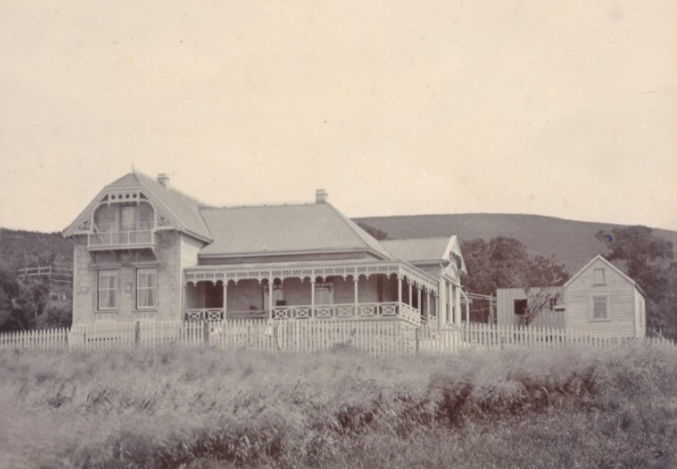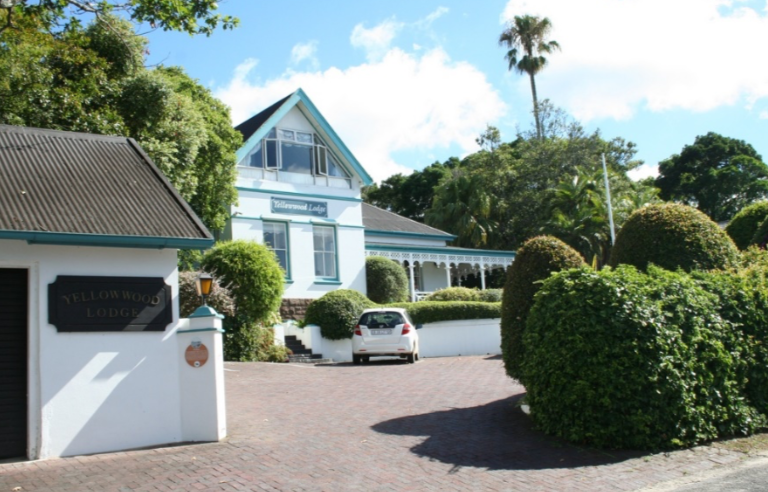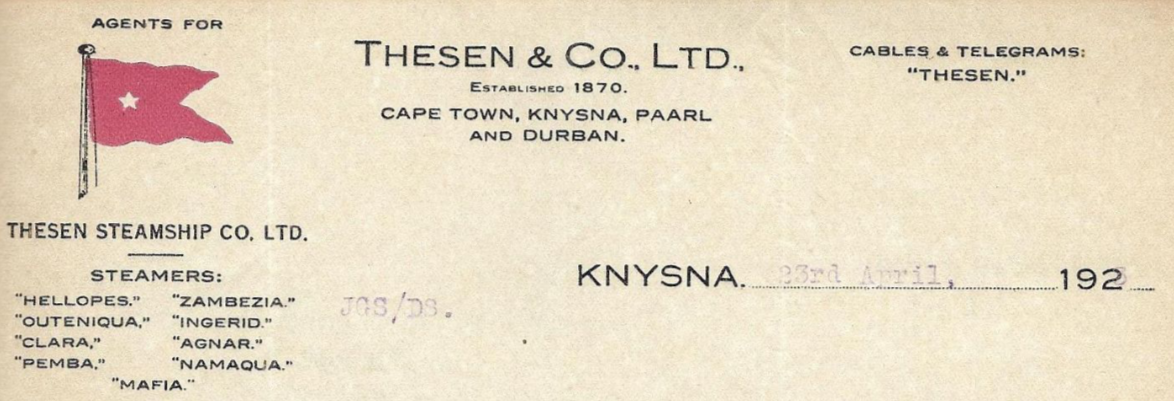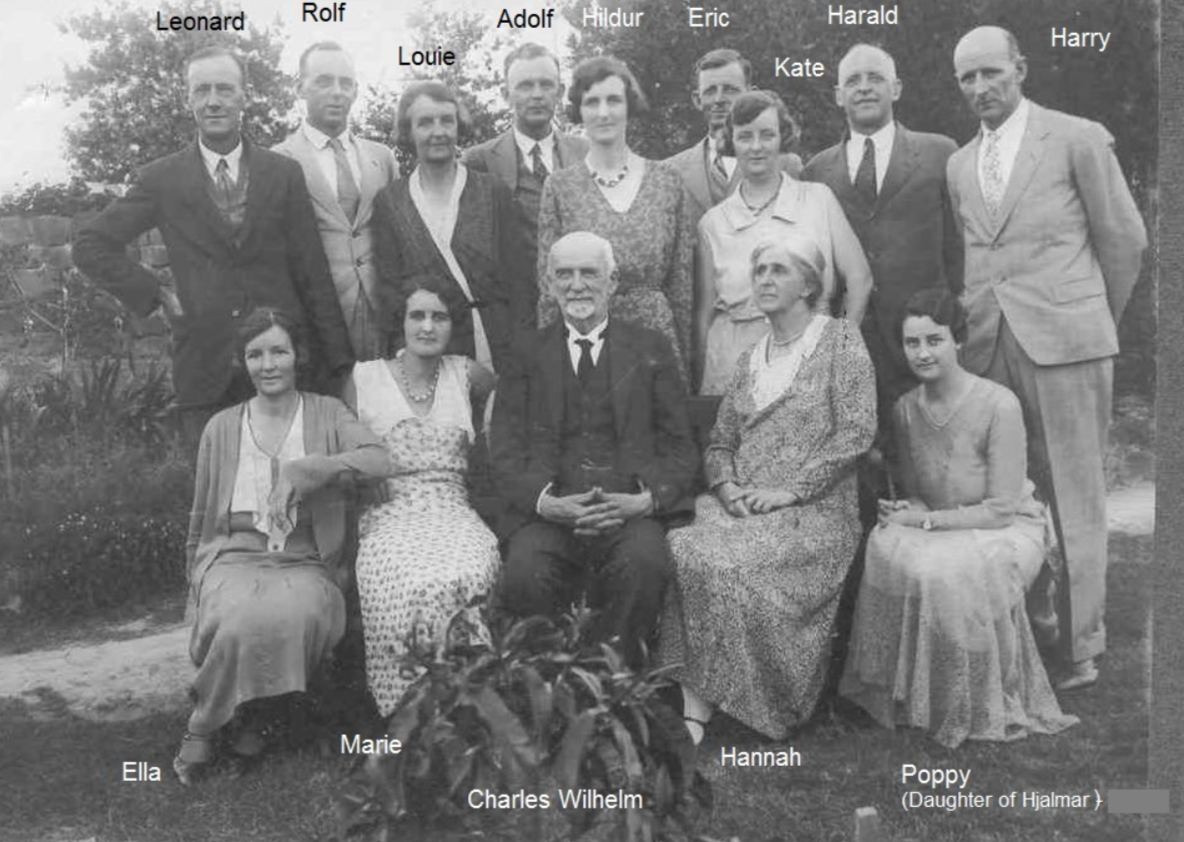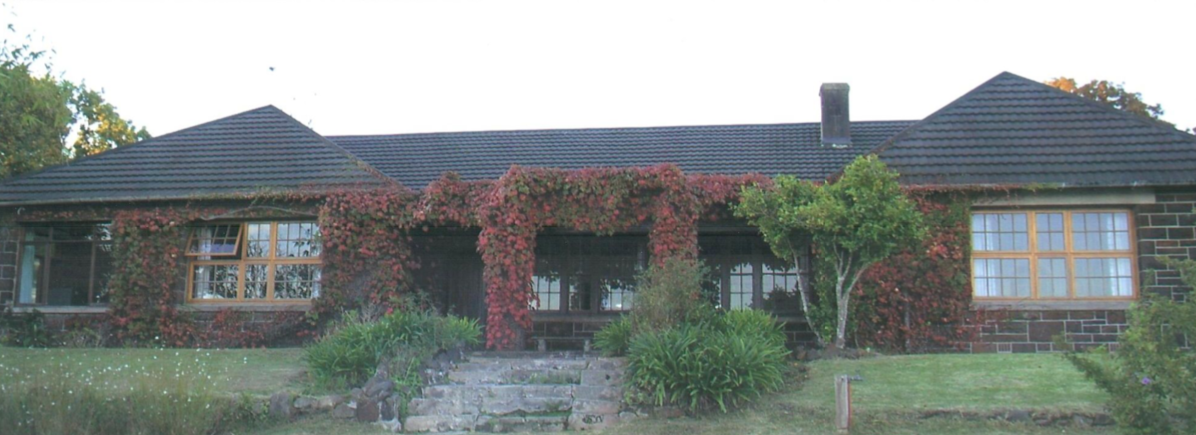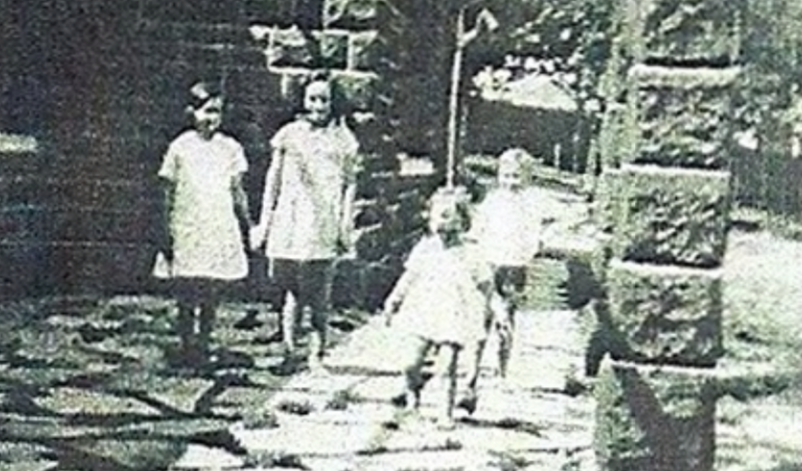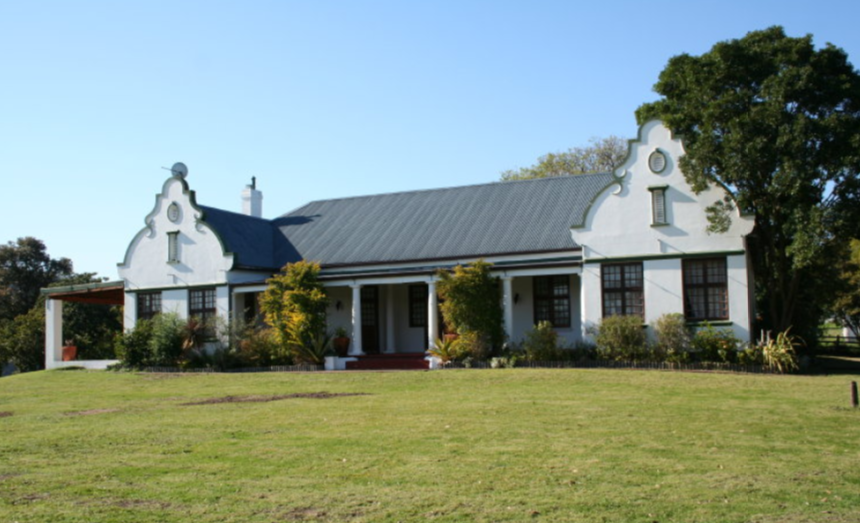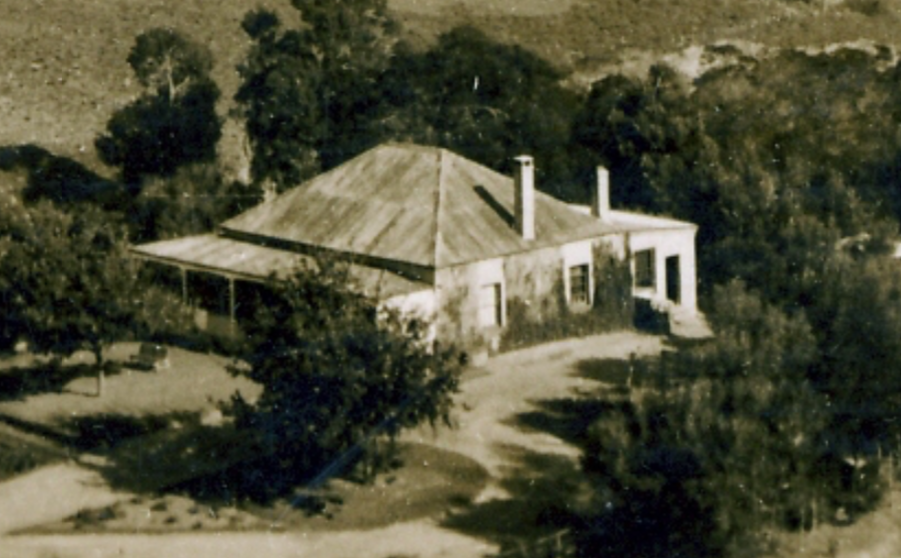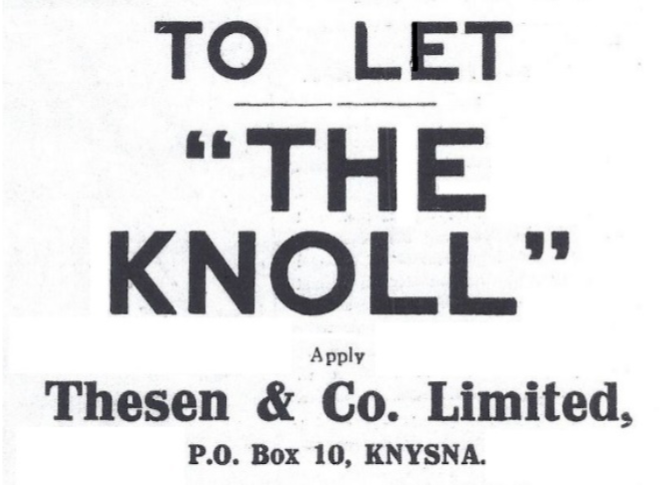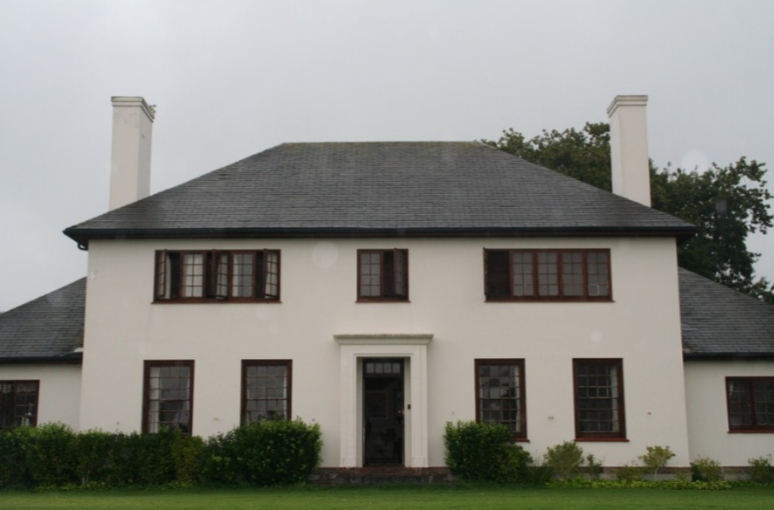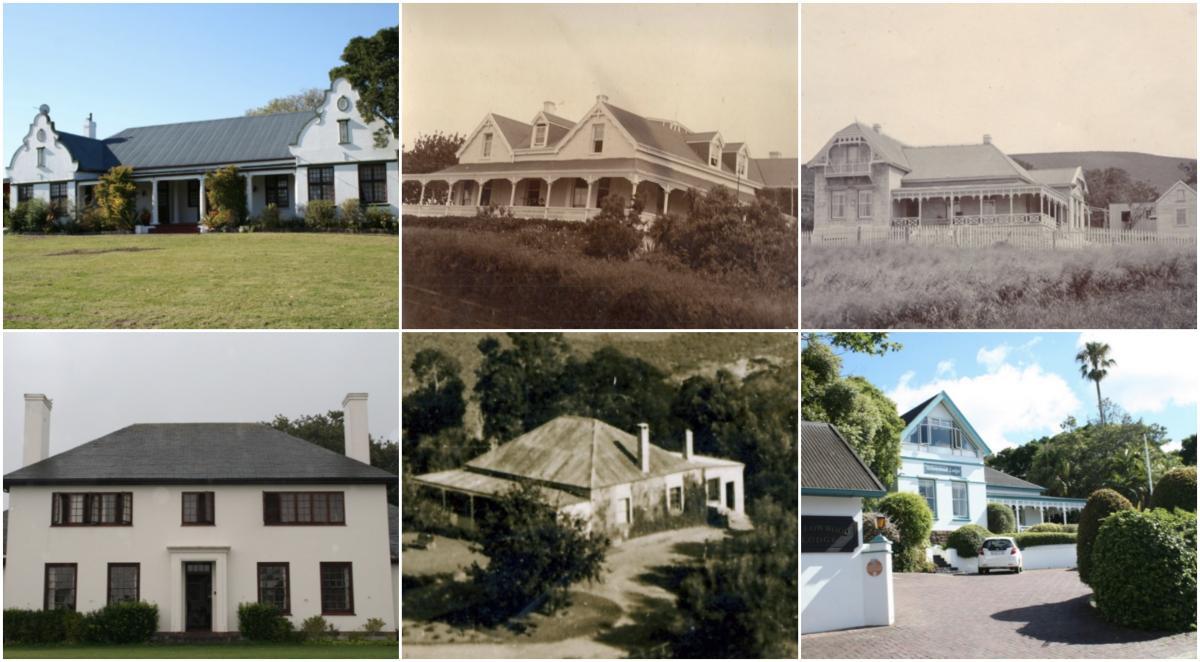
Disclaimer: Any views expressed by individuals and organisations are their own and do not in any way represent the views of The Heritage Portal. If you find any mistakes or historical inaccuracies, please contact the editor.
In the article below, Philip Caveney from the Knysna Historical Society unpacks the history of various homes built by members of the famous Thesen family of Knysna. Click here to download a pdf version which includes footnotes.
The First Generation of Thesens - Mathias Theodore and Arnt Thesen of Stavanger and Knysna
Arnt Leonard Thesen was born in 1816. In 1845 he and his brother Frederick Wilhelm Thesen established the company AL Thesen & Co. in Stavanger. Initially they were merchants selling building hardware but later expanded to be general merchants and after 1857 were shipping goods to and from Norway with their own ships, notably grain from Northern Europe.
But this was not to last. On September 1868 an Economic Depression struck Norway and major clients in Stavanger defaulted on payments and business came to a standstill. AL Thesen & Co. was forced to close its doors.
Arnt Leonard Thesen decided to seek new pastures – immigration to New Zealand was considered. With help from the family and his elder brother Mathias Thesen, a sea captain, they managed to find enough money to buy the Albatros out of the insolvent estate and to load the ship with the supplies they needed to sail to their chosen destination plus a load of timber to trade to allow a new start.
They departed Stavanger on 20 July 1869, with a few calls to make at Tonsberg and Plymouth, but by the end of August they set sail for New Zealand.
They reached Cape Town on 16 November 1869 and after re-victualing, set sail for New Zealand but fortunately for Knysna they encountered heavy weather which damaged sails and rigging so that they were compelled to return to Cape Town for repairs. Whilst in Cape Town they were approached by traders to use the boat to deliver supplies along the Southern Cape Coast. After positive feedback about the potential of Knysna from skipper Hans Thesen, the son of Mathias, they decided to rather settle here.
The families arrived in Knysna in 1870. They moved into the house of William Macpherson in what was then Melville Street (now Main Street) known best today as Harry B’s but now the ‘Knysna Hotel’ and set about their business. Initially they continued with their shipping business but soon expanded into trading and timber.
The Second Generation of Thesens
Arnt Thesen had seven male descendants:
- Hjalmar (died 1922)
- Rolf (died 1883)
- Ragnvald (died 1936)
- Nils Peter (died 1929)
- Charles Wilhelm (died 1941) Theodore (date of death unknown) and
- Sigurd (date of death unknown)
Charles Thesen outlived most of his siblings.
Several Thesens circa 1920
Hans Thesen and the Bracken Hill Cottage (c. 1890)
Hans Thesen was the son of Mathias Thesen, brother of Arnt Thesen. As early as 1870, when the new Thesen’s trading company was established, the twins Rolf and Ragnvald Thesen were placed in charge of the woodcutting and timber trading business. However, a statement in December 1872 of Thesen’s assets and liabilities makes no mention of the farm Modderhoek (later renamed Bracken Hill), which suggests that the family had not purchased forest land at this time and were merely trading in timber.
However, in October 1876 the Thesen family purchased a well forested 1,079 morgen piece of Crown Forest Land known as Lot RR at that time known as Modderhoek which was registered in the name of Rolf Thesen. They immediately set about establishing a sawmill on the site.
The farm Modderhoek was 1000 morgen in extent, and in 1890 was regarded as the most accessible section of the forest.
Bracken Hill Cottage
Management at the Bracken Hill Sawmill
The first manager at the Bracken Hill was reported to have been the skipper of the Albatross, Mathias Theodore Thesen (brother of Arnt Leonard) assisted by his son Hans Thesen. They did not stay long and moved on to farm at Wittedrift.
1876 to 1886
As mentioned earlier, the forest section known as Modderhoek was purchased by the Thesens and registered in Rolf Thesen’s name in 1876. At an early stage of the Thesen’s business venture, the Thesen twins, Rolf and Ragnvald were allocated the responsibility for the timber business. However, we read on the Franzsen family website that young Johannes Franzsen (the cook on the Albatros) and three of the Thesen boys soon left for the Kimberly and Delportshoop diamond diggings. After a brief period they returned and Ragnvald formed a business partnership with his now good friend Johannes Franzsen and they were trading at Sour Flats during the period 1872 to 1875. After the Suurvlakte business failed in 1875, Johannes Franzsen settled at Belvidere and Ragnvald would have rejoined the family business and most likely the twins would have been responsible for the Bracken Hill sawmill during the early part of the period. Unfortunately, Rolf Thesen died in 1883.
1886 to 1891
In 1879 Johannes Franzsen hired a farm from George Arthur Palmer named Quarrywood (Highway). Johannes and his brother Frantz (Frank) ran the farm jointly but all did not go well and the business was liquidated on the 20th May 1886. Johannes was now forced to start all over again and he and his family moved to Modderhoek (Bracken Hill) where he was appointed as manager of Thesen’s sawmill. But he left five years later in 1891 to accept a position as forest official based at Ysternek. His infant daughter Selina died at 9 months at Buffelsnek, in 1896.
1890
By this time Hjalmar Thesen was in residence at Bracken Hill, and presumably, as the senior Thesen director on site, was in charge of operations. It is possible that the cottage was built at Bracken Hill during his tenure.
1891-1909
After his return from farming with his father at Wittedrift, Captain Hans Thesen re-joined Thesen & Co. Soon thereafter he was appointed manager of the sawmill, and remained there with his family, until his death in May 1909 at the age of 65. Interestingly, the family continued to stay in the house until after 1913.
1909 onwards
Later, Tom Willis, who joined Thesen’s in 1911 and worked for them for many years, recalled that during the time Hjalmar Thesen was in charge of Bracken Hill and said that Hjalmar “though the elder of brothers, was not so active and usually moved between Cape Town and Knysna” whilst Harald spent much of his time in Norway. His siblings Sigurd managed the Sawmills and Ragnwald took charge of the stevedoring of the ships in Knysna. But by this time the next generation of Thesen sons was taking over.
Hjalmar Harrison [Harry] Thesen a son of Charles Thesen was put in charge of the Bracken Hill operation but it is not known if he lived at Bracken Hill.
Charles Wilhelm Thesen and ‘The Hill’ house (1899)
In 1873 the Newhaven commonage was transferred to the Civil Commissioners of Knysna and allotments laid out to allow for the extension of the growing village of Knysna.
The property on which this building was erected, erven 274, 275, 276 and 277, was only alienated in 1895 and acquired by and registered in the name of 22 year old Eliza Bessie Georgina Harison in that same year. She was the wife of Charles Wilhelm Thesen, born 1857, who married him out of community of property on 29 April 1881. Charles was only 12 years old, a son of Arnt Thesen of Stavanger, Norway when the family left Norway in 1869.
The house was built 30 years later in 1899 of a Victorian design with a red tin roof, and was only about 18 months old when, in June 1901 war broke out. During the Second Anglo Boer War, the decision was taken by the Boer Generals to enter the Cape Colony. Jan Smuts was chosen to lead a group of 300 burgers into the Cape. Before this happened Charles Thesen had planted 200 pine trees on the remainder of the property, which were harvested from 1928 onwards.
Earlier in this year martial law had been extended to include the Cape Colony previously excluded but now under threat. As a result, on 17 January, the Civil Commissioner and Resident Magistrate Maximilian Jackson called a meeting of all prominent citizens and tradespeople; simultaneously Mayor James Henry Templeman called a meeting of all able-bodied male citizens, with the aim of creating a Town Guard. They recruited 200 volunteers, 70 of which would form a Mounted Troop and 130 to form a Town Guard of foot soldiers (the infantry). Maximilian Jackson acted as Commandant until March.
At the end of January 1901 the 805 ton HMS Widgeon lay outside The Heads and played her lights on the surrounding hills.
On 2 February Maximilian Jackson posted a public notice announcing the strict conditions relating to the declaration of Martial Law in Knysna. Jackson signed the notice Commandant, Knysna.
On 1 March 1901 Major William Anstruther-Thomson took over command of the Knysna Town Guard. He immediately took on the task of building a twin-towered fort on top of Town Hill (Verdompskop). The fort later became known as Thomson’s Folly because it saw no action (or perhaps brought to mind the ‘folly’ ruins built in the landscaped gardens of the English nobility of earlier years!)
By 1 August 1901 the Boer Commandant Gideon Scheepers was in the Langkloof causing trouble where he attacked the Post Office at Avontuur. Major Thomson responded by placing the Knysna Town Guard in readiness and the Standard bank sent all the assets under its care to Mossel Bay by sea.
Charles WW Thesen’s wife Bessie (born Harison) died on 6 August and was buried the next day. She was 38 years old. She left a will drawn up in 1900 stating that the properties registered in her name should be transferred to her (existing) eight children. Her husband Charles could continue to live in the home with usufruct rights on the property until his death.
On 14 August ‘The Boers” had advanced down the Langkloof and a skirmish took place at Karakuil River, near Haarlem. On 18 August the new Thesen house was requisitioned by the Knysna Commandant of the Knysna Town Guard because of its strategic position overlooking the town in the fear that the Boers might make their way to Knysna and use the building as a convenient headquarters. It was 10am on a Sunday morning when the order to evacuate their home was given to the Thesen family. They left the building with their Sunday dinner and had to depart hastily taking their dinner into the Knysna village to stay with members of the extended family. The Hill House was commandeered for 39 days at £5 per day.
The Hill House
On 20 August Gideon Scheepers and his Commando were again in Avontuur. The Knysna people expected the worst but Major Thomson and his men were ready for them. The Standard Bank was closed for a second time.
A 755 ton gunboat the HMS Partridge arrived in Knysna on 12 September 1901 to defend the town if necessary. On 24 September a small detachment with a maxim gun was landed; they returned the next day. Various forms of entertainment were organised for the benefit of the ship’s complement before they left on 2 October 1901.
In 1903 Charles Thesen remarried the daughter of his first cousin Hans Thesen, Lucia Johanna Thesen, commonly known as Hannah. She was given usufruct rights on the property.
Charles Thesen died on 1 February 1940, leaving his vast estate to his children. The property was sold outside of the family in 1990.
In October 1901 the Forester Francis E Tothill based at Storms River sent a telegram to Sergeant Derbyshire in Plettenberg Bay. He reported that 'Twelve dismounted enemy reported in the mountains about opposite Haarlem put two scouts on Spitzkop if sighted turn out all hands do best you can take care of any Patrol following from Haarlem side, also Rex and Monk' (other foresters).
Major Thomson was transferred to Pretoria at the end of 1901.
Hjalmar Thesen at 18 Handel Street, c.1905. (later Howard Parkes: Grendon)
Hjalmar Thesen was the eldest son of Arnt Thesen. The land on which he built this home was granted by the Cape Colonial Government to the Knysna Municipality in 1894, and sold to Solomon Terblans in 1904. He sold the property to Hjalmar Thesen, eldest son of Arndt Leonard Thesen, who built his Nordic-style home here in circa. 1905.
18 Handel Street
This building is very similar in style to Solvang to the east which was built more or less at the same i.e. 1905, by the same builder, who had just completed building Knysna's new Dutch Reformed Church 1904 and was about to design the Market/Town Hall in Queen Street in 1909.
It was designed and built by a Dutch architect and builder Paulus Hofman. So who was this Paulus Johannes Cornelius Hofman?
He was an immigrant Dutch architect, who was appointed in January 1897 as Supervisor in the Department of Public Works, based in Pretoria, under Sytze Wierda. Sytze Wierda had been appointed by President Paul Kruger in 1887 as Government Engineer and Architect of the Zuid Afrikaansche Republiek (Transvaal Republic). Hofman came down to the Southern Cape sometime during or soon after the Anglo Boer War where he advertised himself as an Architect and Builder in the Southern Cape press as late of the “PWD, Oudtshoorn” (with offices in Oudtshoorn and Knysna).
He chose to word his adverts carefully! Hofman's advertisement in the George & Knysna Herald read:
Architect and Contractor
KNYSNA Box 19
Specialty in concrete making which is the up-to-date building Material for George and Knysna.
The last heavy rains show what the clay bricks are.
Plans and Estimates - given on application - Free of charge
The house was bought by the Parkes family sometime after Hjalmar Thesen had retired from Thesen & Co. and had left Knysna with his family to live in Cape Town where he died in Sea Point in June 1922. He was 75 years old. His brother Ragnald and sister Alphilde were staying with him at the time of his death.
Parkes
Howard Parkes had met Winifred (“Kitty”) Wright at Falcon Lodge, Sutton Coldfield when he was apprenticed as learner farmer to his uncle James Parkes, the owner of the farm. Kitty, who had studied agriculture, was in charge of James Parkes’s dairy. After they were married in 1910 they decided to come out to South Africa to Knysna since there was no provision in George’s will for a farm for Howard. They decided that if Kitty liked the thought of settling in Knysna, they would remain.
They rented the Hjalmar Thesen house for £4 per month when the Thesen family moved to Cape Town and later they purchased the land and house on 7 March 1913 which they called "Grendon" after a village near the home of Kitty's father. Howard Parkes bought the property for £1000 and lived here with his wife Winifred and son Bernard.
The Nordic south gable was changed when the drawing room in the south wing was extended. The original property extended south to the main road, and included a tennis court to the west.
Grendon
The Third Generation
It is necessary to stop at this point and revisit the Thesen family power base.
Without doubt Charles Wilhelm Thesen was the driving force behind the fortunes of the Thesen family's Knysna business Thesen & Co. Ltd. Although much younger than most of his brothers, Charles showed enormous ambition and drive and was a very astute businessman. He was instrumental in the creation of the limited liability company Thesen & Company (Pty) Ltd in 1905.
Company letterhead
He was Chairman of the Board of Directors of the Company from 1905 to his ‘retirement’. He was a representative for George in the Cape Legislative Assembly of 1899, served on and was, for many years, the Chairman of the Knysna Divisional Council over a period of 48 years between 1880 to 1928, served as Councillor for the Municipality of Knysna, was Mayor of Knysna between 1890 and 1893 and again between 1921 and 1924, served on the 1913 Woodcutters Registration Board, was a foundation member of the Knysna Yacht club and numerous other organisations.
His brothers were reaching old age, some had died. Nils Pieter Thesen, who ran the Cape Town operation died in 1929, his son Oscar did not have his expertise and the branch office did not enjoy its earlier importance.
In his later life he would have taken steps to ensure that the family business would endure under the management control of the Thesens to come.
It follows that his family members, specifically his sons and older grandsons, would have dominated the Thesen’s business operations through the third and fourth generation. Charles was a generous father and this is evidenced by the generosity towards the houses they built. Maybe this was his plan to keep his successors in Knysna?
To give the reader some perspective on who-was-who in the Charles Thesen family the paragraphs below discuss the relationship of the Thesen home owners through the next two generations.
The photograph below shows the family of Charles Thesen, but for Poppy who was the daughter of Hjalmar, brother of Charles and owner of the house in Handel Street.
The family of Charles Thesen
The sons of Charles Wilhelm were:
- Arnt Leonard 1882-1951 (He had no issue). Leonard bought Portion A of the farm Westford from Martha Helena Strydom in 1925 which he renamed Charlesford in honour of his father Charles Wilhelm.
- Christopher Frederick 1884-1885 (He died as an infant)
- Harald Wilhelm 1887-1966 (No issue)
- Hjalmar Harison (Harry) 1889-1961. Whilst Hjalmar Harison Thesen was the fourth son of Charles William Thesen and Bessie Harison and the most senior son to marry, he was not the first son to produce a grandson. That honour lay with his younger brother Charles Eric whose son Stanley Brian was born in 1918 and his second son Charles Leonard in 1924. The sixth son of Charles Thesen was Rolf Frederick who had a son David Rolf Thesen in 1923. Hjalmar Harison’s first son Hjalmar Peter was only born in 1925. Hjalmar Harison Thesen built Seaford House which Hjalmar Peter inherited on his death.
- Charles Eric 1891-1953. Charles Eric Thesen built the Rushmere house at Ruigtevlei. His first son Stanley Brian, born 1918, being the eldest grandson, assumed a senior management role in Thesens & Co. Ltd throughout his working career.
- Rolf Frederick 1896-1972 Sandsend, England. Rolf built the magnificent Uxmere house at Ruigtevlei. However, his only son David Rolf, born 1923, married an English lass and emigrated to Bath, England. He too emigrated to England where he died in 1972.
- Adolph Frithiof, 1903-1956 The first and only son by his second wife Hannah, left the Cape and settled in Argentina where he later died.
Charles Thesen also looked to the situation of his daughters. For example: His first daughter by Bessie Harison was Louise Alvide Thesen born 1886 who married an Irish Professional Forester Hugh Ryan. On his retirement in 1939 he and Alvide built a formidable home at Welbedacht which was registered in her name and which they called Scarteen South. There is no possibility that Hugh Ryan could have afforded to build this home without the financial help of his father-in-law. Furthermore, the first daughter of his second wife, Hildur and her husband Ted Stent, who worked for Thesen & Company, could afford to purchase the equally impressive home known today as Point House.
In 1925 the children of Bessie Thesen (born Harison) donated the usufruct right for Hannah Thesen, the second wife of Charles Thesen, to live in the home until she died. Charles Thesen died in 1941.
On the death of Charles Eric Thesen in 1961 his 1/8th share was transferred to his four children and then all four erven and improvements were transferred to Thesen & Company Pty Ltd.
Seaford House – Hjalmar Harison [Harry] Thesen, 1929 Erf 4067
Built by Hjalmar Harison (Harry) Thesen in circa 1929. The building was severely damaged in the fire of June 2017.
Seaford House
An examination of relevant survey diagrams reveals that:
- A portion of Eastford Commonage was transferred to the Municipality of Knysna on 1 July 1893, on which Lots 268-276 were laid out.
- Lots 271, 272 & 273 were later consolidated into Lot 247 on 20 July 1895 and acquired by Walter C Young in terms of Deed of Title 4019. Ownership to Hjalmar Harison Thesen must have taken place during the next century as from family accounts the home was built circa 1929 by Hjalmar Harison (Harry) Thesen. Note: Erf 3484 was created in 1970 from the consolidation of Erf 247 & Erf 3483 (1970), a portion of Erf 215 (Commonage) and Erf 4067 was created in 1972, from the consolidation of Erf 3444, a portion of Erf 215 (Commonage) (1967) and Erf 3484 (1969).
Children of Harry Thesen (and friend) wander around the new house, sans roof. They would be: Aorea, born 1921 (married John Edwards), Hjalmar Peter, born 1925 (married Judy Tapson), Pamela, born 1928 (married Hugh Hutcheson)
Broughton House - Rolf Frederik Thesen and Uxmere 1922
Rolf Frederik Thesen was born on 18 July 1896, the 5th son and 8th child of Charles Wilhelm Thesen and Bessie Georgiana Harison. He went to school at St. Andrews in Grahamstown. Following on from his older brothers Harald, Hjalmar and Eric, he was placed in Espin House for Boys, during the period January 1912 to June 1914.
He served with his brothers, Leonard, Harry (who was awarded the Military Cross) and (Charles) Eric, in the armed forces during World War I. Rolf served with the Royal Flying Corps (RFC) overseas from 1917. All of the boys came home safely. Having returned to South Africa they farmed here on a portion of the Ruigtevlei farm, which formed part of the Thesen Forest plantations on this side of Knysna.
In 1922 he built this family home, which he named Uxmere, on what was then Ruigtevlei Lot H. He married Mary Fleming Bennie in Cape Town and they had 4 children, including a son David Rolf who lived in Bath, England and died in 2002.
Uxmere
Rolf Frederick farmed at Ruigtevlei until he relocated to Knysna when he joined the family business Thesen & Co (Pty) Ltd., as a Director, in the 1930s. He was a keen yachtsman and commodore of the Knysna Yacht Club for several years. In Knysna he lived at The Knoll (also known as Knoll House). He was transferred to the Thesen’s branch office in Durban in 1937.
At the outbreak of World War II he became a Sergeant in the South African Air Force (SAAF) until discharged for health reasons, whereafter he returned to Knysna until the end of the war, to the Company's service, and then back the Durban branch office.
He died at Sandsend, Yorkshire, England in 1972.
The Knoll (Knoll House) circa 1920
Knoll House was apparently built by Thesen family as a “Company House”. The house faces east, towards Charles W Thesen’s house The Hill (now Falcon’s View). We don’t know the exact date that the house was built, but Alida Thesen (born Bergh), the widow of Hans Thesen who died in 1909 continued living at Bracken Hill until around 1913, then lived in this house before she died in 1923 at the age of 74.
Knoll House
As mentioned earlier Rolf Frederick farmed at Ruigtevlei until, in the 1930s, he joined the family business Thesen & Co (Pty) Ltd. in Knysna as a Director. When he moved to Knysna in 1930 with his family they lived at The Knoll (also known as Knoll House).
By October 1927 the Knysna railway line was marching steadily to Knysna and was to unfortunately dissect the existing course of the Knysna Golf Club in two. The KPH of October 1927 reported the members were considering a site “on the slopes at the back of the town.”
At the commencement of play at this new course in 1929 there was a surge in new membership to over 100 members, but then a slow year by year decline until 1937 when the members considered migrating to the new golf course that George Cearn had built on Leisure Island, which was only a 9 hole course.
Why do I mention this?
Because during the life of the Hill Side course The Knoll building had been used by the Knysna Golf Club as a clubhouse, presumably rented from the Thesen family. But by 1936 the club’s finances were dwindling and the house came onto the market again, because of a more attractive golf offering on Leisure Island.
In October 1936 Thesen & co. Ltd advertised the building TO LET. However, it was only in May 1939 that George Strydom the new Golf Club Chairman reported that the Hillside course was deemed unsuitable for older players, nor sufficiently encouraging for beginners. This course was euphemistically referred to as the Hill Side or Top course, but due to its hilly terrain course was referred to by many members as the “Goat track”!
The advertisment
By May 1939, on the death of Charlie Stroebel of the Old Place farm, the Knysna Golf Club committee began negotiations with John Stroebel about the possibility of moving the Golf Club course to Old Place.
In May 1938 the Knoll property was sold to WB Edmond and in July 1945 the Knoll was put up for auction by JR Beck.
Scarteen South, the home of Hugh and Louise Alvide Ryan (b. Thesen)
Hugh Joseph Ryan was a forester, trained in France who came to the Cape Colony sometime between 1898 and 1906, and joined the Cape Department. He was appointed District Forest Officer, Concordia, in February 1907. During this time whilst stationed in Knysna, he met and later married Louise Alvilde Thesen, the first daughter of Knysna businessman Charles Wilhelm Thesen, to his first wife Bessie Harison.
He was transferred circa 1916 to the Eastern Conservancy, where he spent over 20 years, including postings to Keiskammahoek, Butterworth and Umtata.
At the time of his retirement in 1939 he held the post of Senior Professional Officer, which was one notch before Conservator status. (So was EC Langton)
His son Hugh (Boz) Ryan wrote in 1980:
My Father (HJ Ryan) always had a great love of Knysna and its lagoon. It was where he had worked as a young forest officer from 1909 and met and married his wife Louise Thesen. He enjoyed being in a boat on the water whether rowing or sailing (as a schoolboy he had rowed for his school), and was a founder member of the Knysna Yacht Club. So it was natural therefore that when only 5 years remained to his retirement in 1939, he wanted to buy some land to be able to retire to Knysna, and in this he was encouraged by his father-in-law, CW Thesen, who told him in 1934, that the George Diocese of the Anglican Church, which owned most of Knysna, were planning to sell some of their Eastford properties.
Dad wanted if possible, a lagoon site to give access to a boat and sufficient land to keep a couple of horses and possibly a cow. Accordingly he bought 4 erven, one of which was on the lagoon (the Boathouse) and three other erven.
As the retirement date drew near, R.A. Leftwich of a Cape Town firm of architects was appointed to design a house on the main Erf 1503 and Mom was responsible for giving the instructions.
Note: Richard Alfred Leftwich graduated with a first class degree in Architecture in June 1927. He spent a short time in the office of John Seely, FRIBA, before he entered the office of Sir Herbert Baker in London in October 1927.
Scarteen South
Design criteria for the new home
Hugh (Boz) Ryan continues:
On rainy Sunday afternoons in Umtata, the whole family would sit around and discuss what they would like. Dad's requirements were: a large family room upstairs (the 'long room'); a lockable workshop; two huge underground water tanks, an extended septic tank sewerage system; an engine room for an electricity generator and hot water reticulation (the Beeston system) throughout the house with a 'hotroom' in the ceiling for drying clothes.
He also wanted extensive use of hardwoods including Yellowwood and Blackwood floors and a Redwood staircase. He also suggested a 'men’s' wing, a sort of series of four or five 'loose box stables' with showers for his sons and their friends. This idea was shot down by both Mom and the architects!
He also wanted a small oratory for morning and evening prayers. However, in practice in winter, evening prayers were held in the warmer Long Room.
Mom wanted a folding door to join the entrance hall and the sitting room - this was fully endorsed by the children for 'dances'. Subsequently the idea was extended and folding doors were inserted to include the dining room as well. She also wanted a lot of fireplaces, removable panels on the staircase, as she was keen on woodcarving.
She was somewhat scathing about the architects original drawings, which included bay windows.
The daughters were delighted to be allocated their own rooms, the upstairs balcony reflected a family preference for open air sleeping, perhaps not quite practical in Knysna's winter climate, so sliding windows were later added. The sons had rooms and a bathroom downstairs.
There was a service area of garages, domestic servant quarters and a laundry enclosing a small courtyard.
The detailed planning led to a very self-contained and comfortable family home, and the foresight of these two huge underground tanks meant that there was never any serious danger of a water shortage.
The Building of Scarteen South
Hugh (Boz) Ryan describes the construction of the house as follows:
The plans were approved in mid 1939 and the parents, having sold their Umtata house, moved into the cottage about the same time, awaiting the return from schools and universities of their children. An acceptable building tender was received and then in September, World War II broke out and Dad hesitated until he had a chance to talk to his children in December, when we all urged him to go ahead. Work commenced almost immediately, which was just as well because by the time the house was completed, there was an acute shortage of all building materials. Of particular interest was the fact that the roof was made of Californian redwood shingles, possibly this was the last use made of this attractive and durable roofing in South Africa (finally replaced 45 years later).
Click here to view the website of the Knysna Historical Society.
Comments will load below. If for any reason none appear click here for some troubleshooting tips. If you would like to post a comment and need instructions click here.

